Managing to pull off Pokémon looks with a delightfully adventurous interior, it might be the most charming EV on sale. Still, it isn’t perfect.
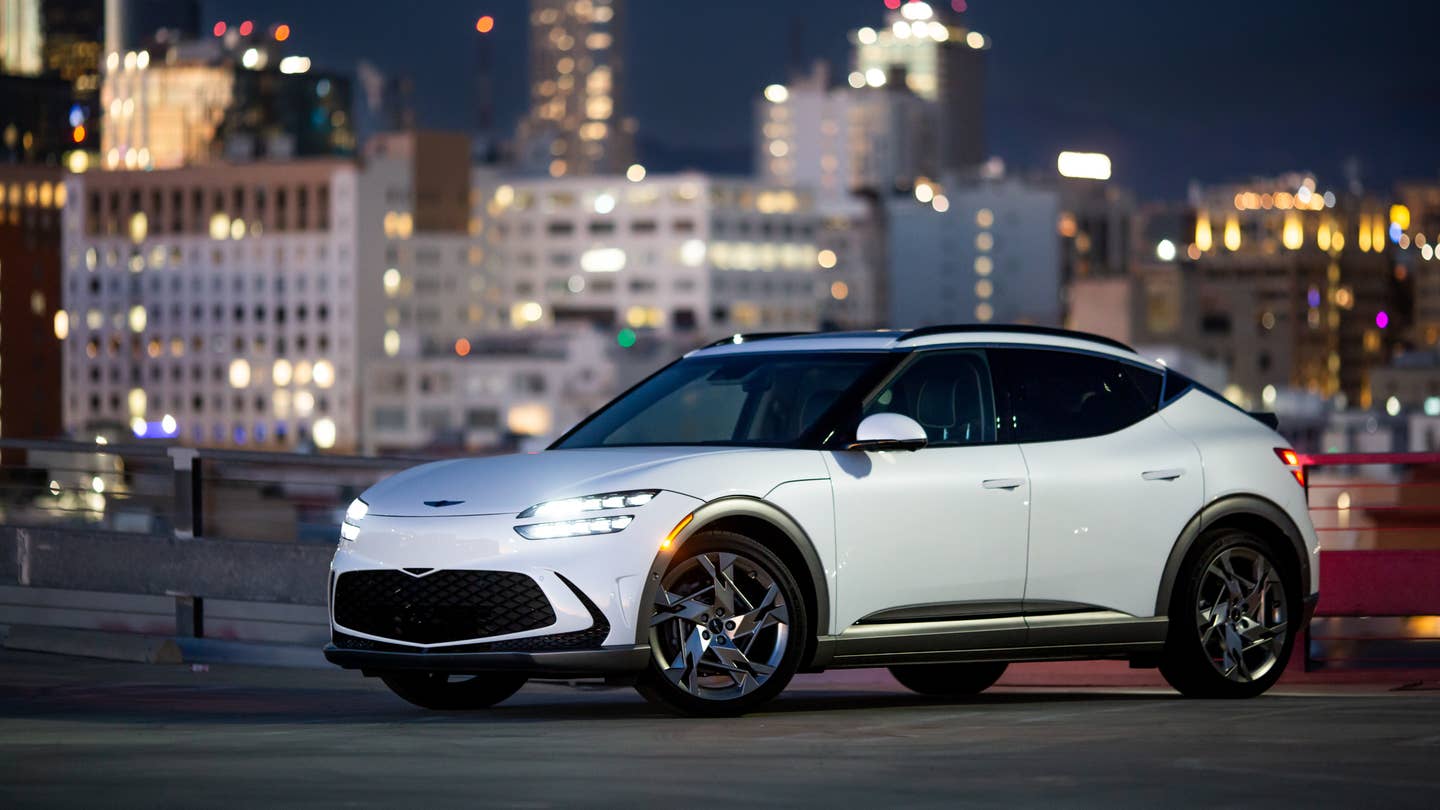 Chris Rosales
Chris Rosales
During my week with the 2023 Genesis GV60, I made an interesting observation: EVs are really hitting their stride. It wasn’t that long ago that charging stations only had a handful of Nissan Leafs, Chevy Bolts, and the occasional Mitsubishi i-MiEV parked in front of them. When I was charging the Pokémon-esque Genesis, however, the variety of cars I found reminded me of how far EVs have come. There were Rivians, Benzes, a Polestar or two, and a Volkswagen over there somewhere. It was neat.
That immense progress is exemplified by the GV60 and its platform mates, the Kia EV6 and Hyundai Ioniq 5. Those cars are more affordable, while the GV60 is meant to be a true luxury product. But it goes a step beyond being a good luxury EV. It reaches into things I really love about automobiles. Design, and its ability to make you feel things, are crucial to forming a bond with the car. The GV60 feels like that. It feels like something made by folks who really cared about it.
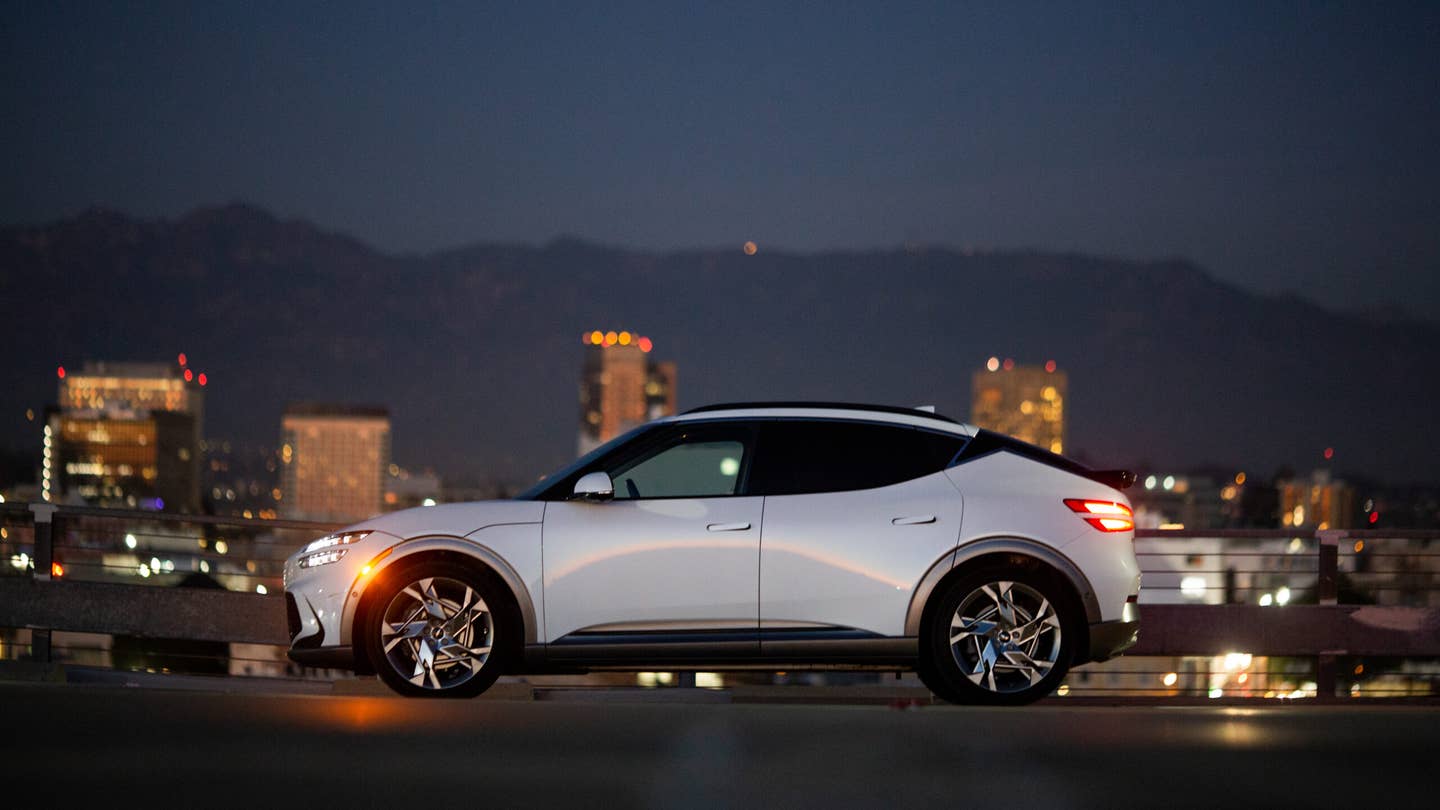 Chris Rosales
Chris Rosales
2023 Genesis GV60 Performance Specs
- Base price (Performance trim as tested): $59,290 ($69,990)
- Powertrain: 77.4-kWh lithium-ion battery | dual permanent magnet electric motor | 1-speed transmission | all-wheel drive
- Horsepower: 429 (482 with boost mode)
- Torque: 479 lb-ft (516 lb-ft with boost mode)
- Seating capacity: 5
- Curb weight: 4,872 pounds
- EPA Range: 235 miles
- Quick take: The GV60 goes above and beyond to be unique in a growing EV market and pulls it off magnificently. But its essentials still need some work.
- Score: 8.5/10
The Basics
The GV60 is a fresh contender, being the first Genesis EV and new for the 2023 model year. For the U.S., we get two variants: Advanced and Performance. Both have a dual-motor all-wheel-drive setup with a 77.4-kWh battery. There is a slight difference in range and horsepower, with the Advanced netting 248 miles over the 235 miles of the Performance while simultaneously being down 169 hp. But the Performance comes with neat handling tech like a rear clutch-type electronic limited-slip differential and adaptive dampers. Inside, the two have nearly the same equipment, but the Advanced gets copper dash trim and silver brake calipers while the Performance gets silver trim and black brake calipers. It’s the little stuff.
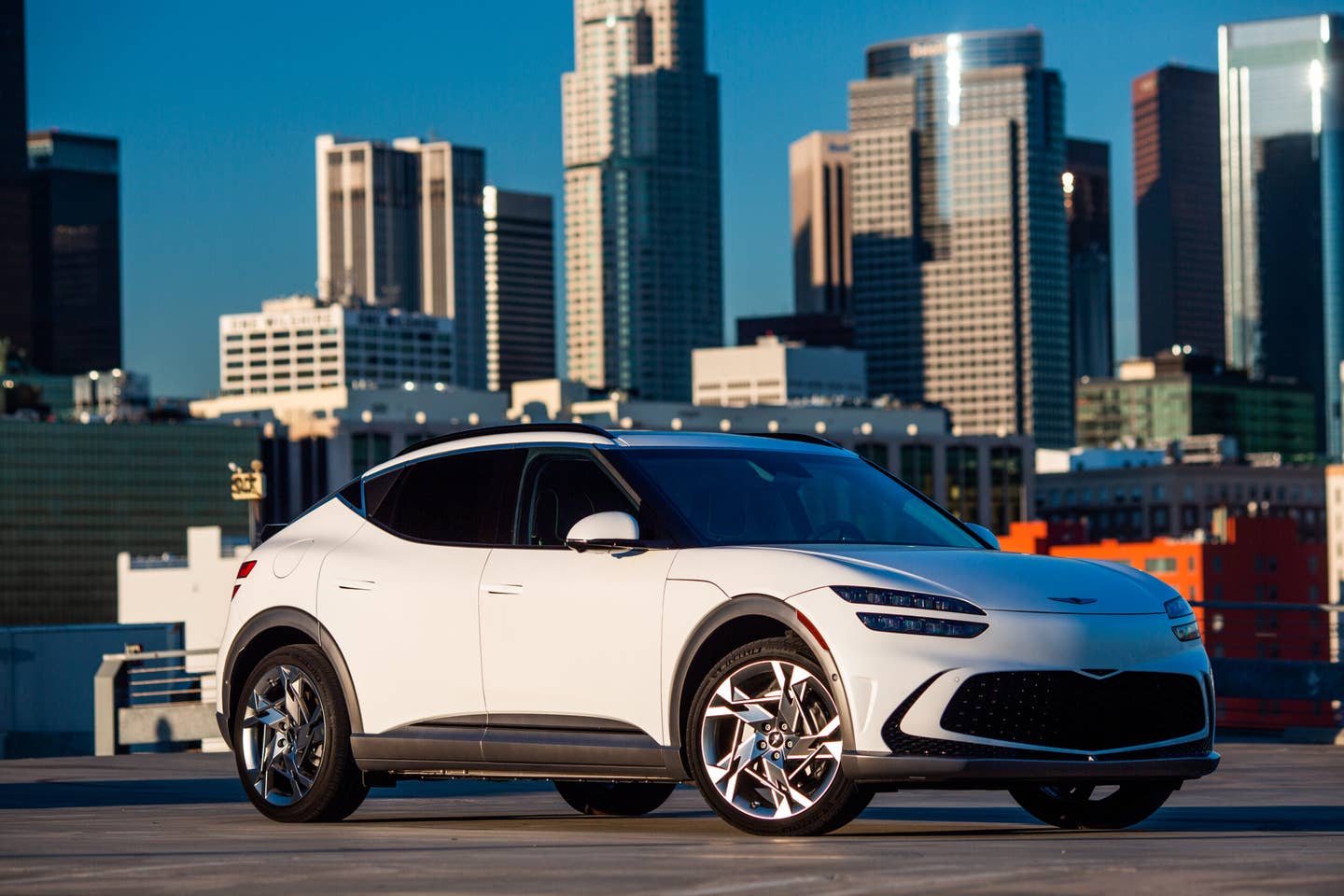
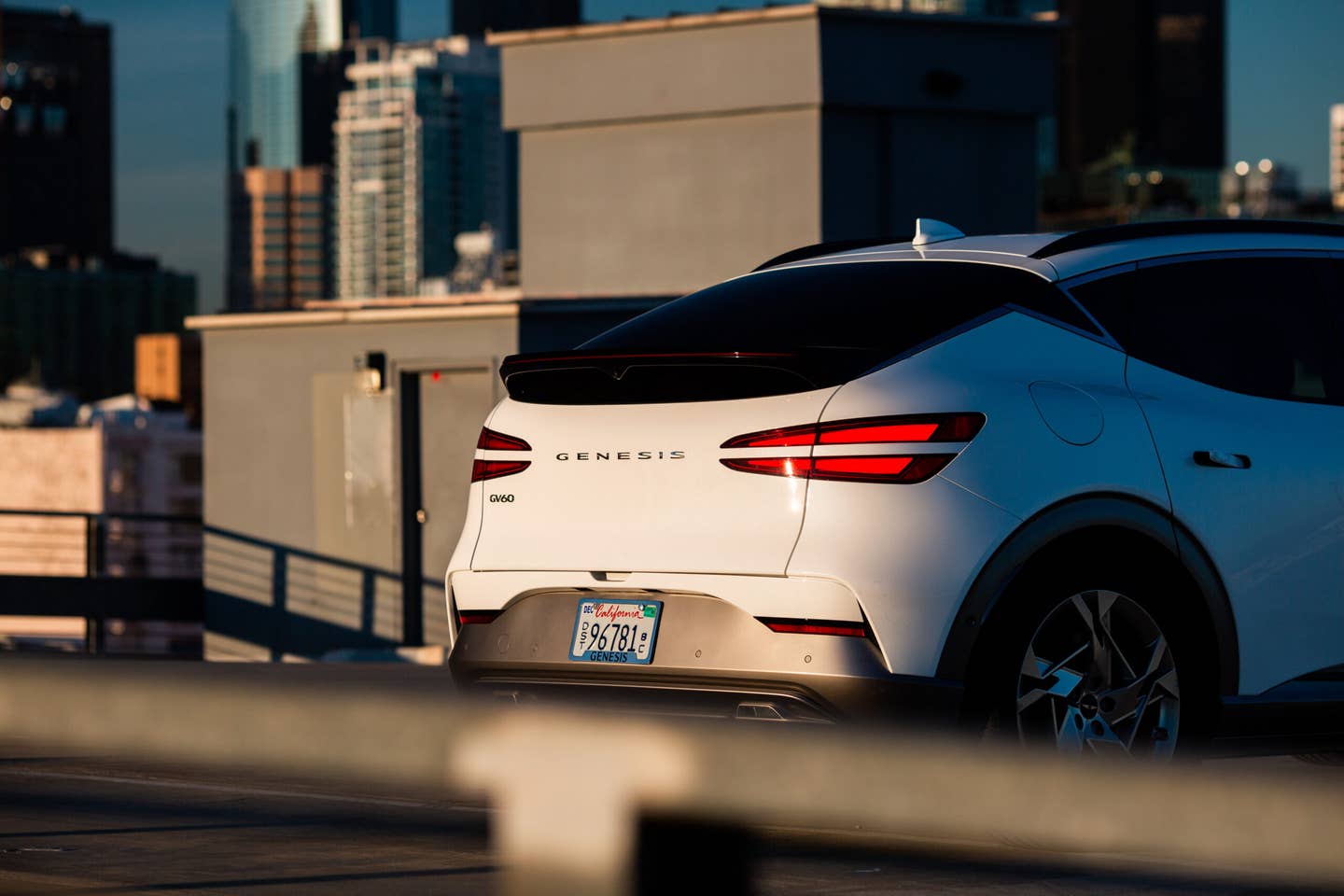
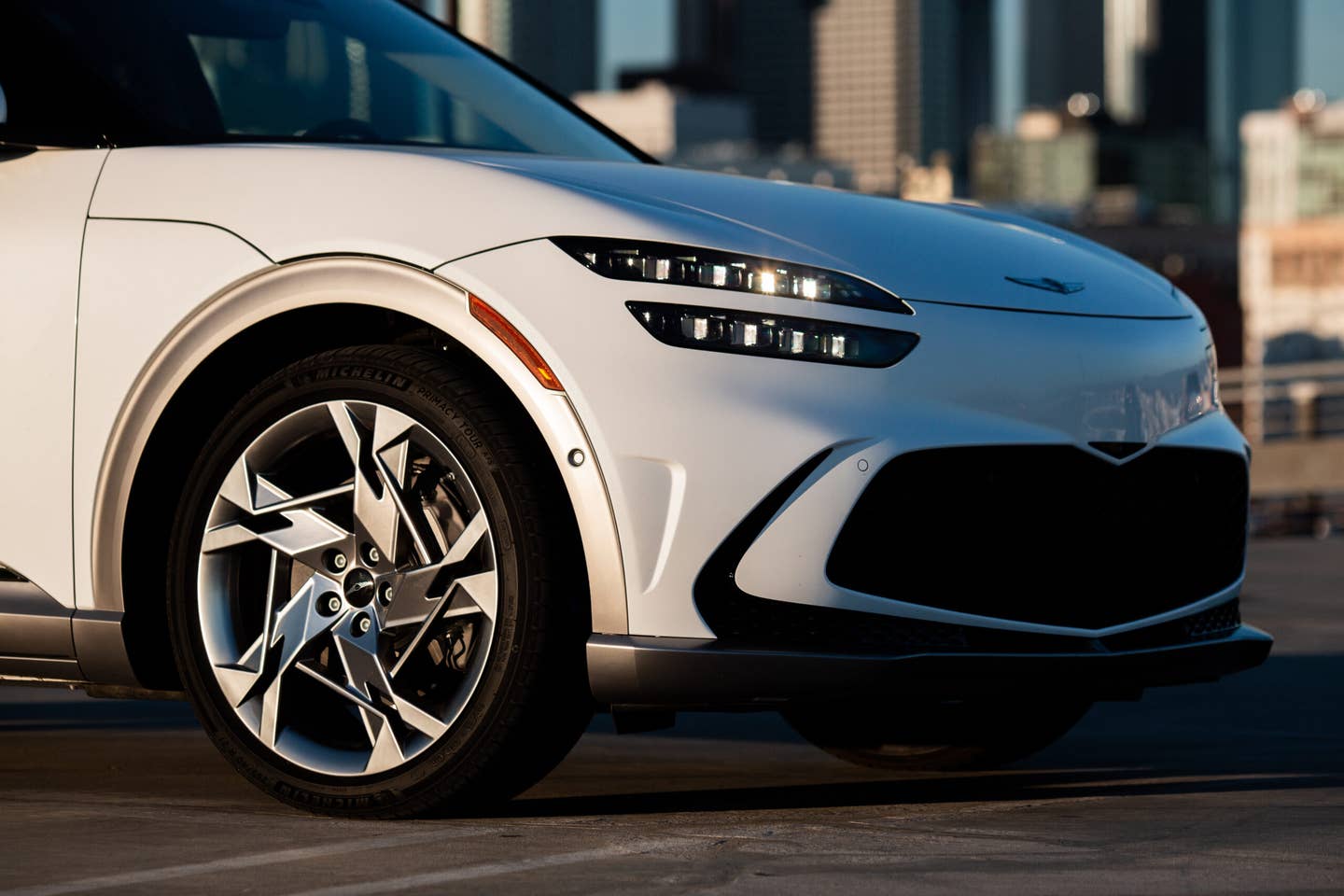
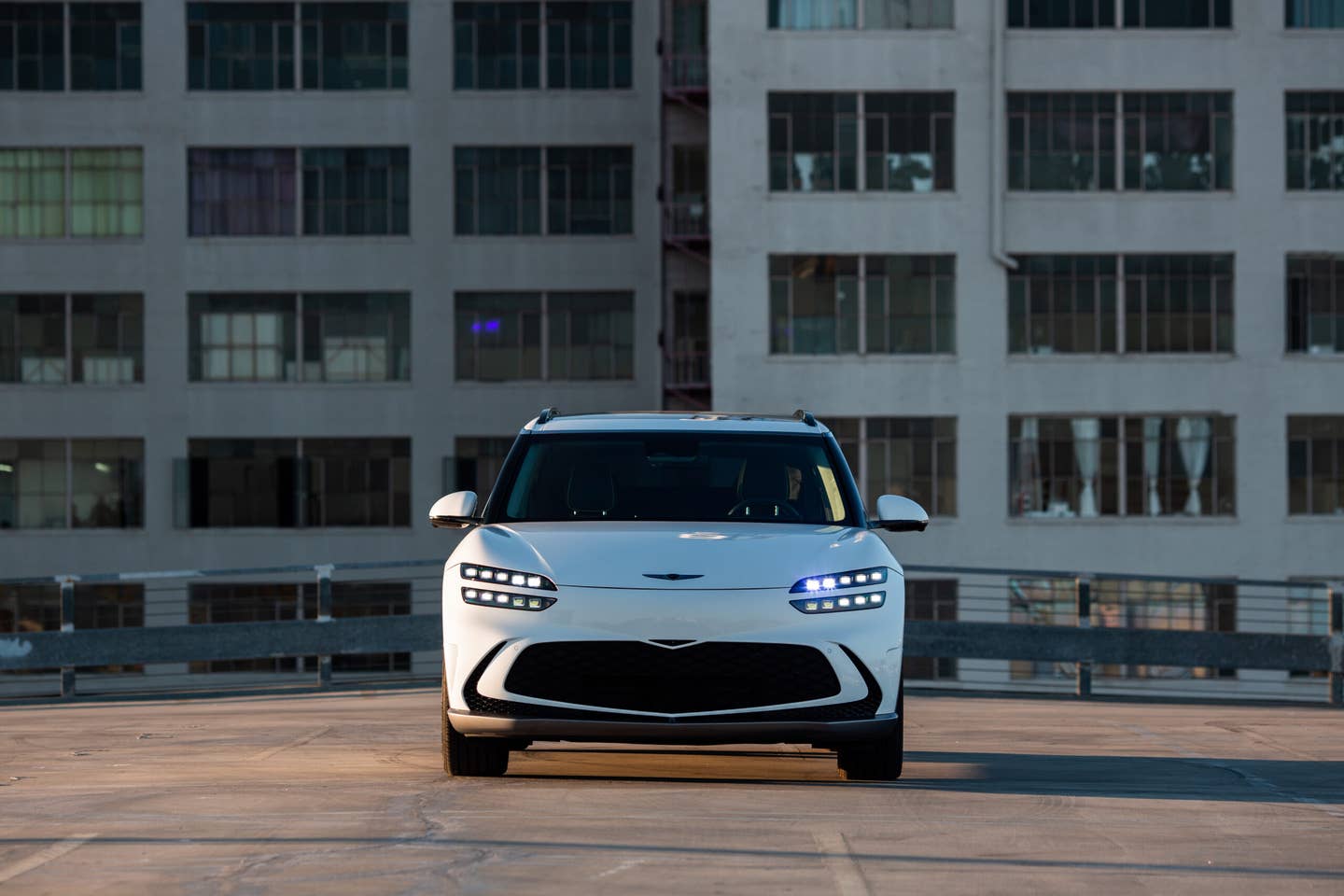
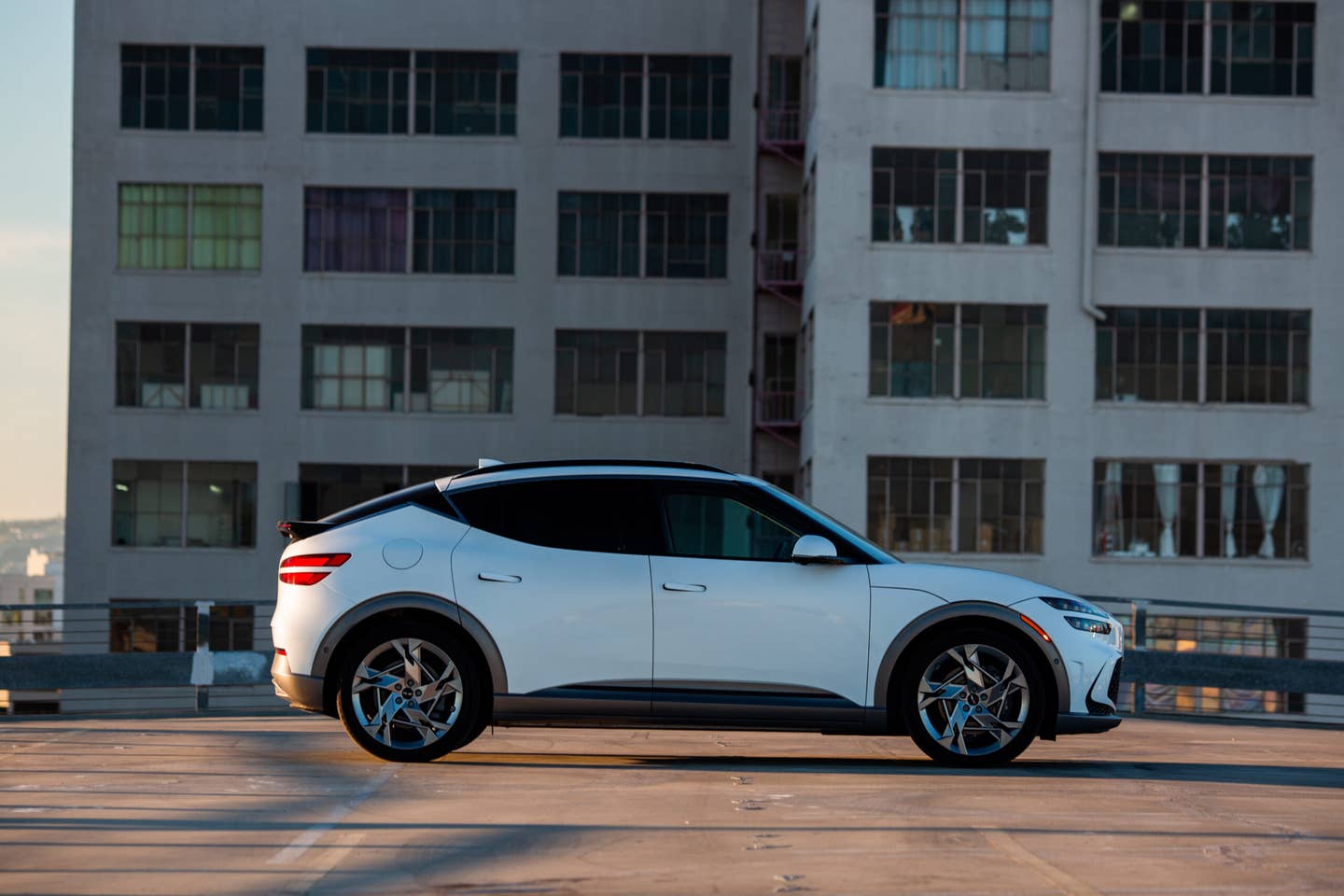
Chris Rosales
What could be considered the GV60’s most divisive feature is the exterior. It’s either cute or ugly, weirdly proportioned or just strange enough in execution; there is no middle ground for the GV60. It commits to the bit. It’s Y2K, it’s an anime character, but it’s also a deadly serious luxury car. Objectively, it is quite short looking, like a foot in a shoe a few sizes too small. In no universe is it a stunning car, but it’s a car that is trying to look weird, rather than just happening to look weird.
Inside, however, it’s stunning. The mix of materials, textures, and freestyle design makes for an engaging and interesting space to spend time in. It’s also spacious, and surprisingly versatile with a reasonably large trunk, big legroom in the backseats, and front seats that are comfortable and supportive. There are neat features everywhere, like the glovebox that pulls out like a drawer, or the seats that can go so far back that the car becomes an office during charging stops. It also has real-world usability, plenty of space to stretch out while driving, and a reasonably useful trunk. It aces the school of interesting interior design with outright fashion and attention to detail.

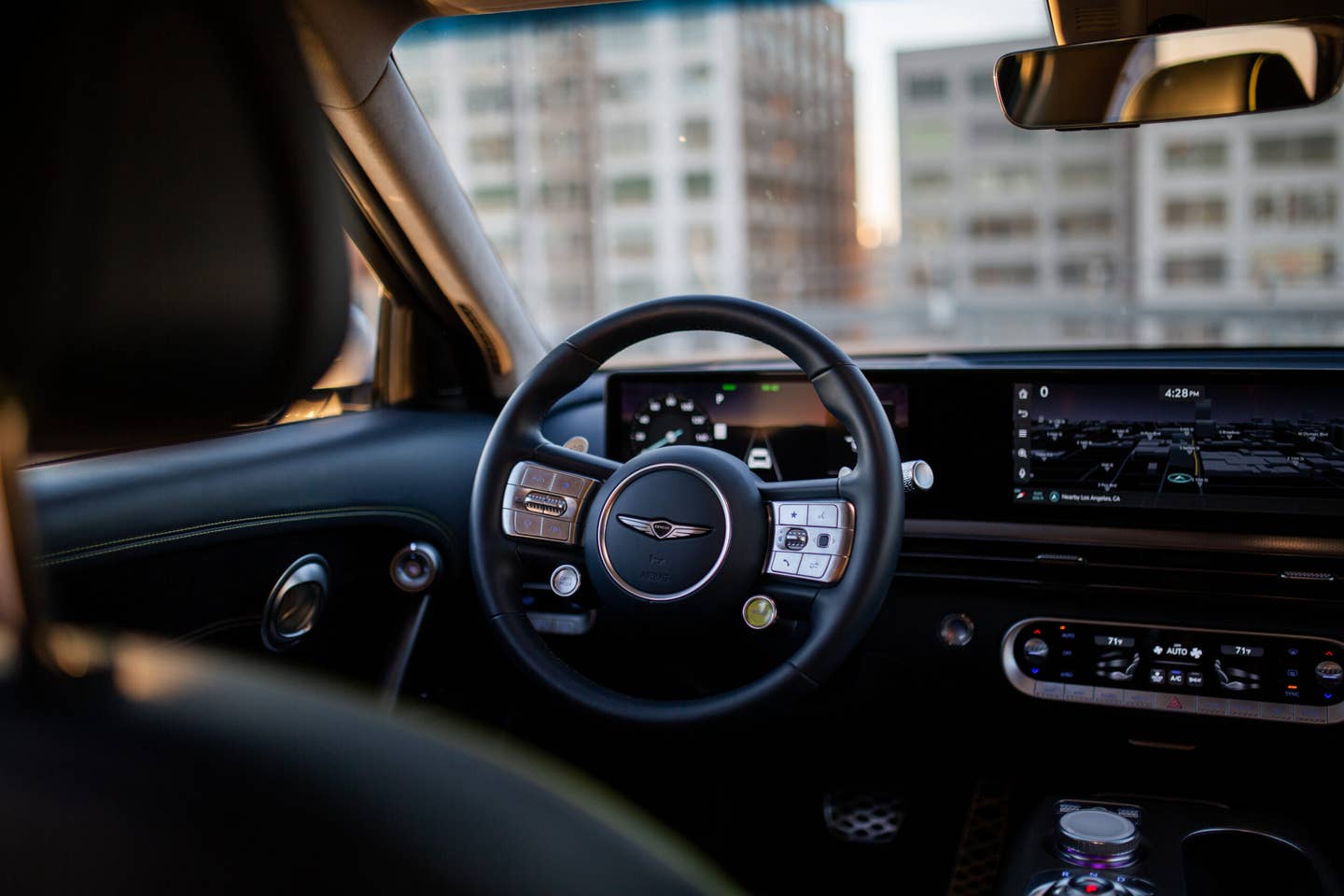
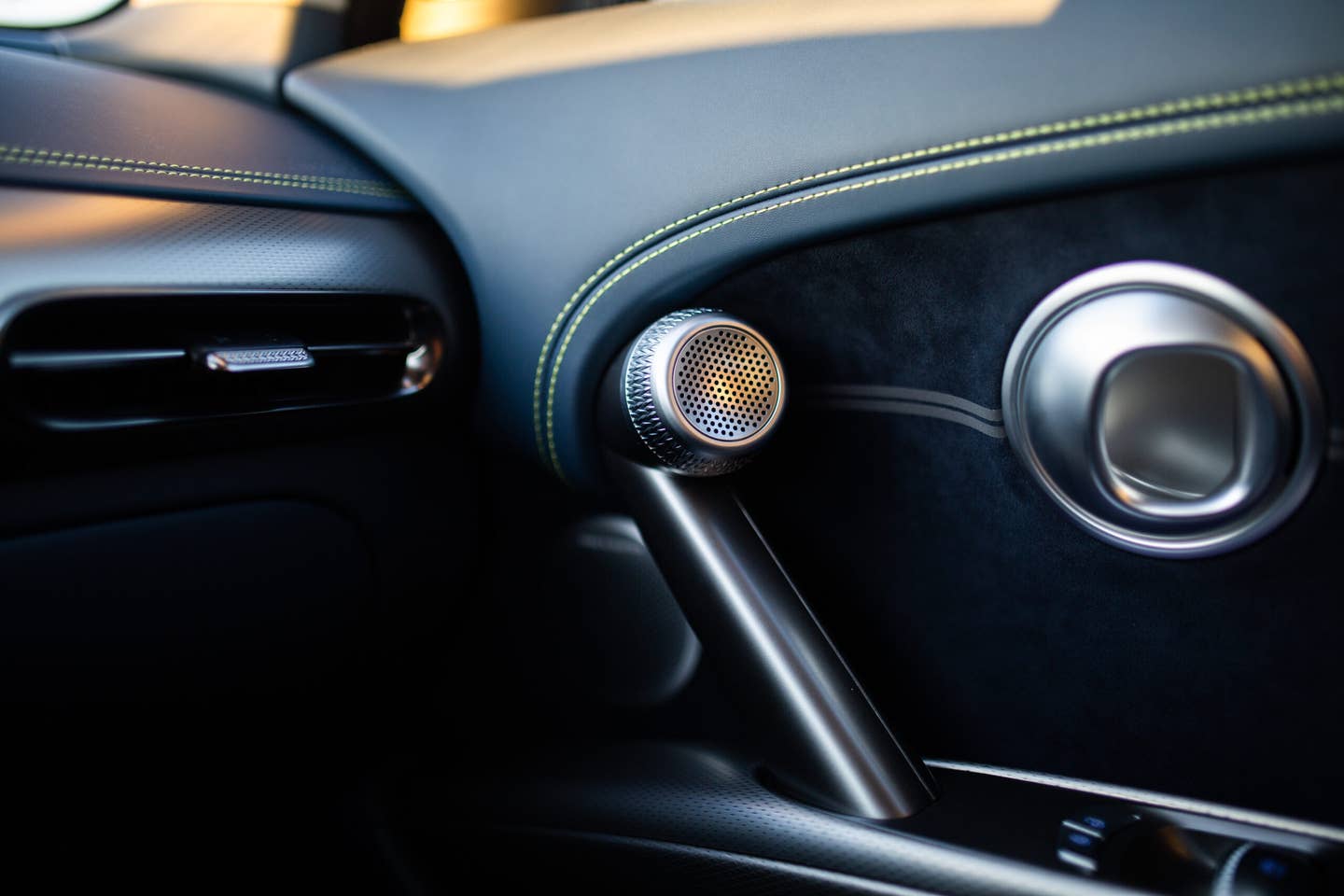
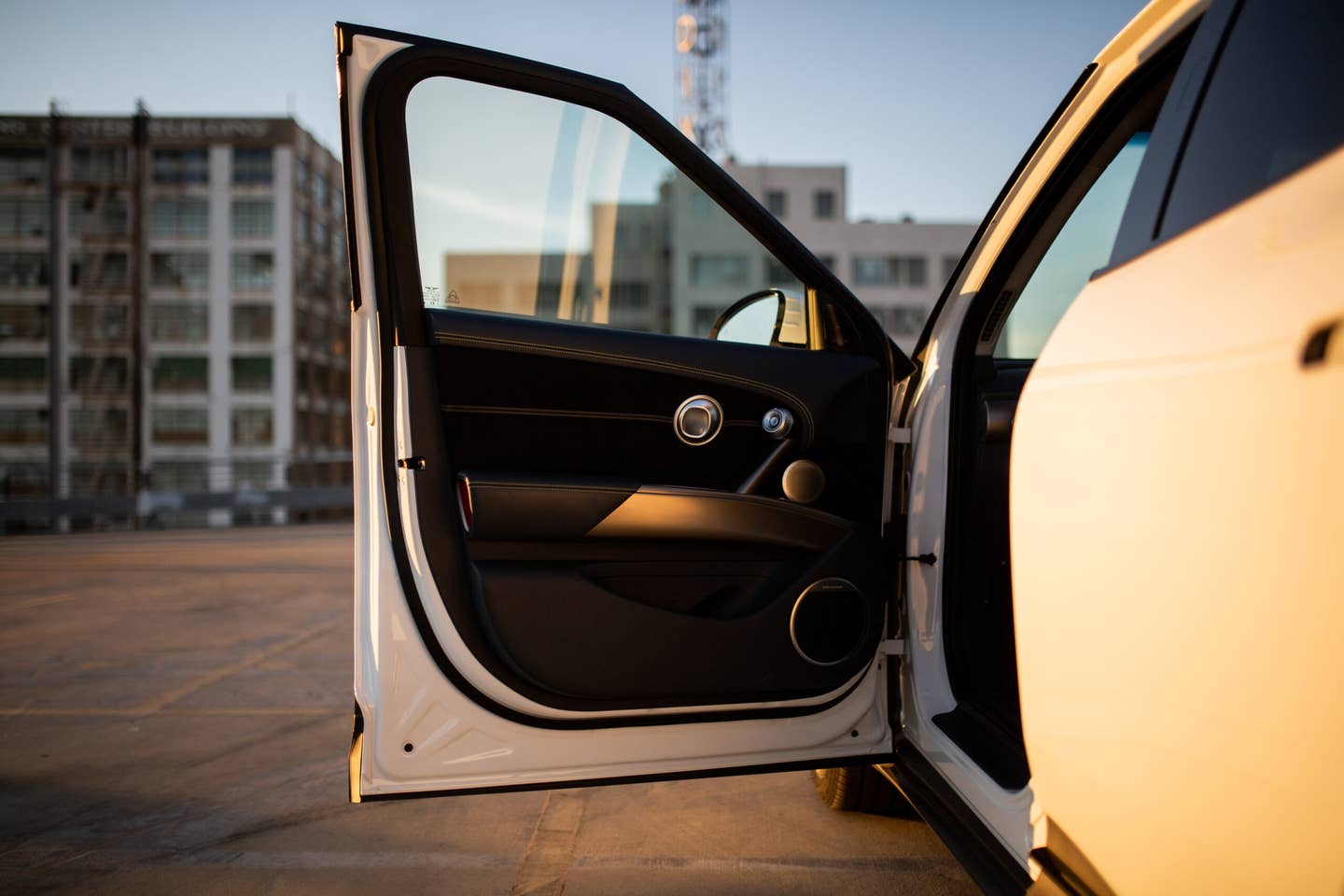
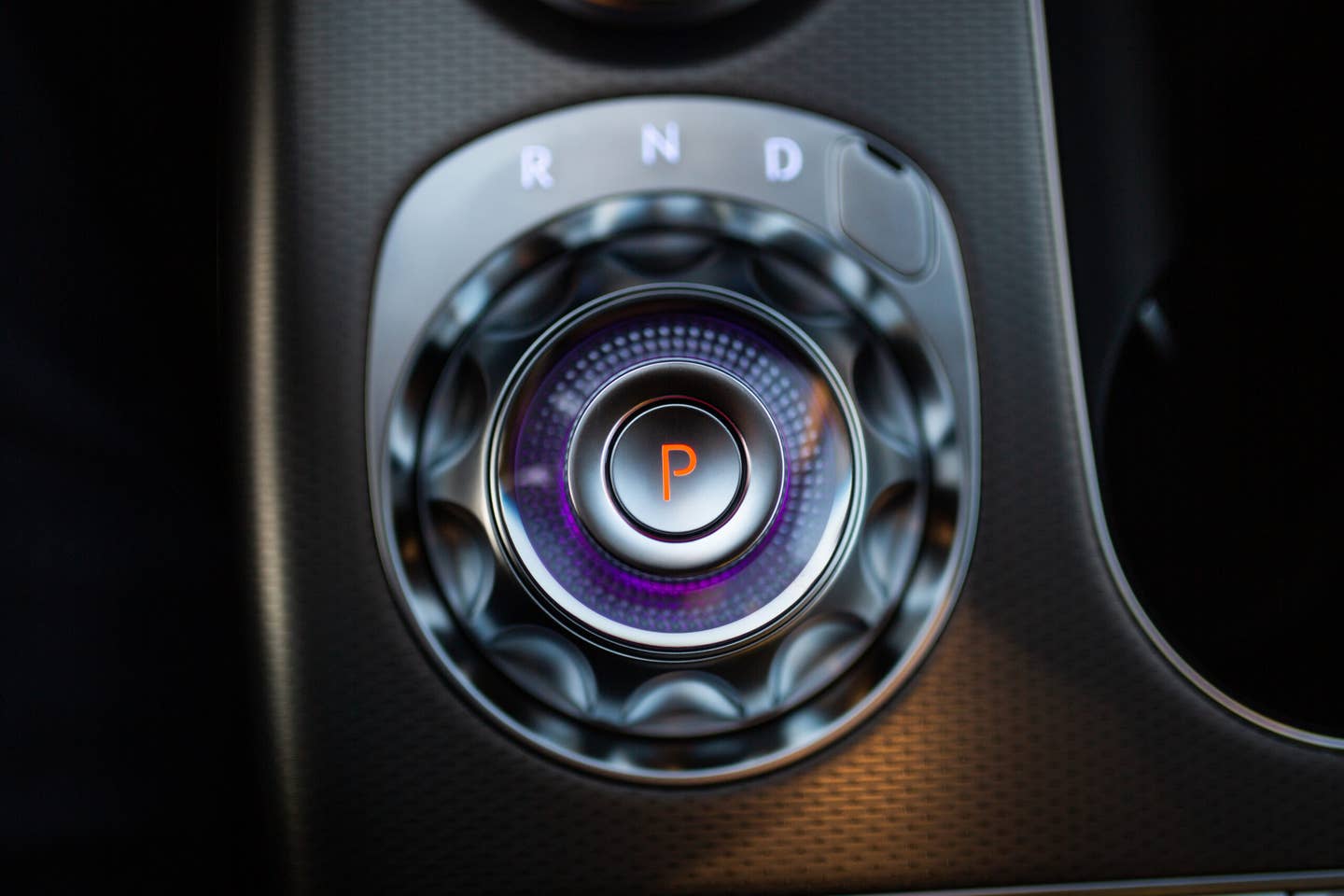
Chris Rosales
That same attention to the minutiae flows into ergonomics. For most functions in the car, there are three or four ways to interact with it. There’s the conventional button and scroll route, the big central touch-sensitive knob route, the touchscreen route, and the steering wheel route. This might seem confusing, but it allows for more usability for more types of drivers. It’s especially useful because there are programmable buttons that let you customize shortcuts, and most scroll wheels can also function as a button to add another layer of functionality to the car. It could have been a disaster to allow so many inputs, but the GV60 pulls it off beautifully. As a Black Mirror-esque bonus, you can unlock the car with facial recognition and start it with a fingerprint scanner.
Driving the Genesis GV60 Performance
There’s a lot of talk about the sameness of EVs, but the truth is that any car still requires years of development and tuning. Electric drivetrains give engineers a head start with their baked-in smoothness, power, and efficiency, but anyone who has tried to make something from scratch knows that the last 10% is the hardest part, and also what makes the difference. Genesis, as proven by their previous cars, has a talented team—a team that has given the GV60 some of that shine.
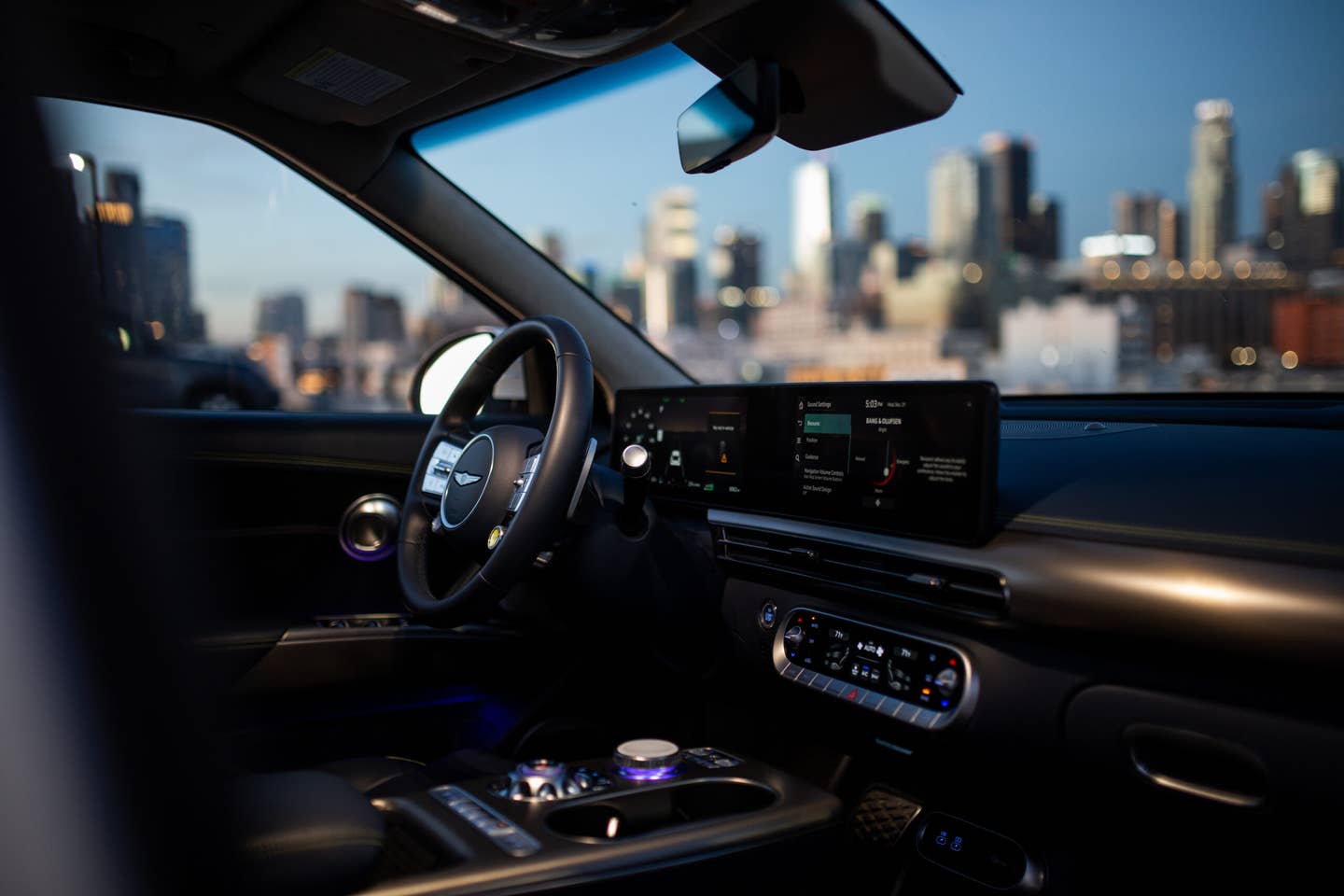

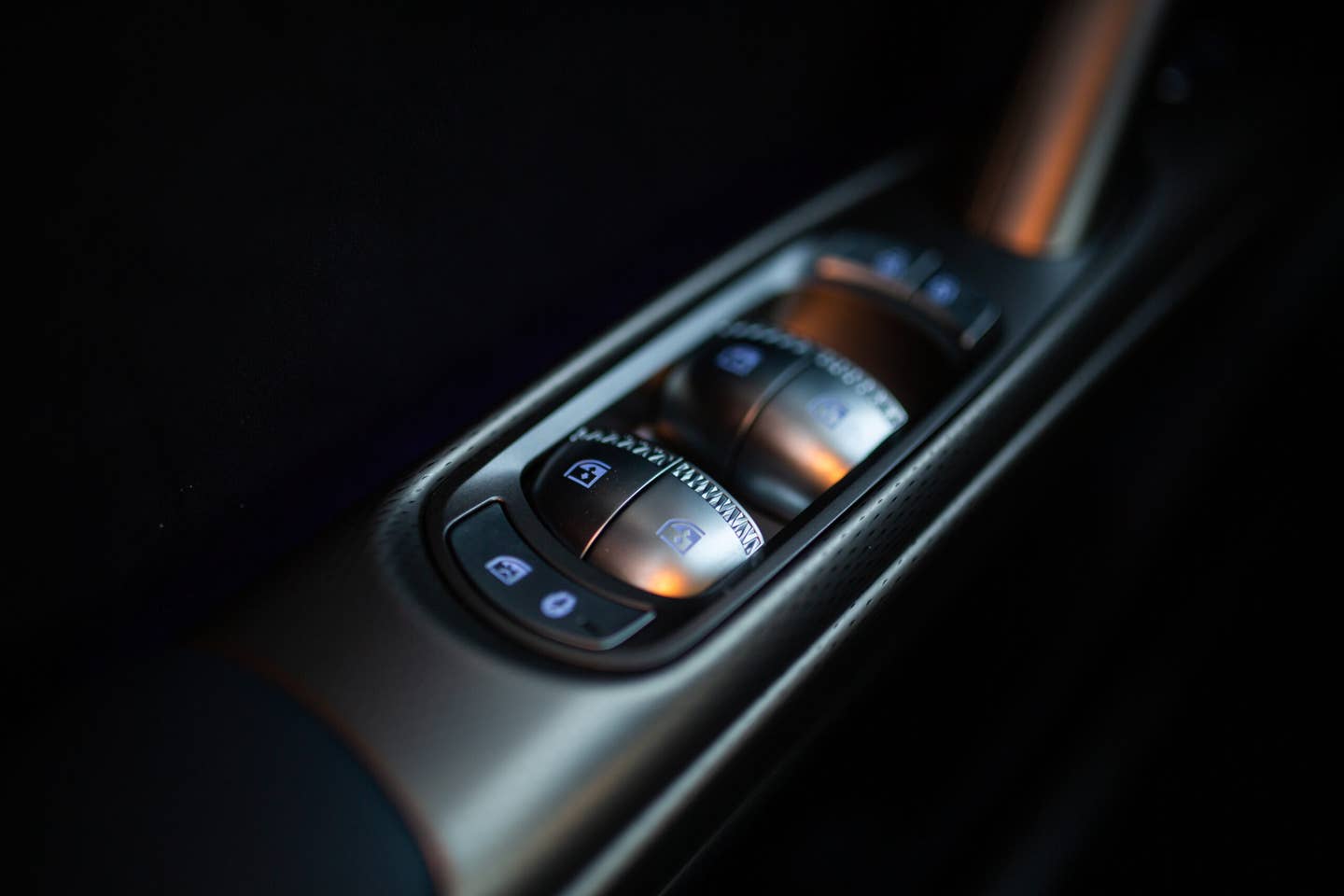
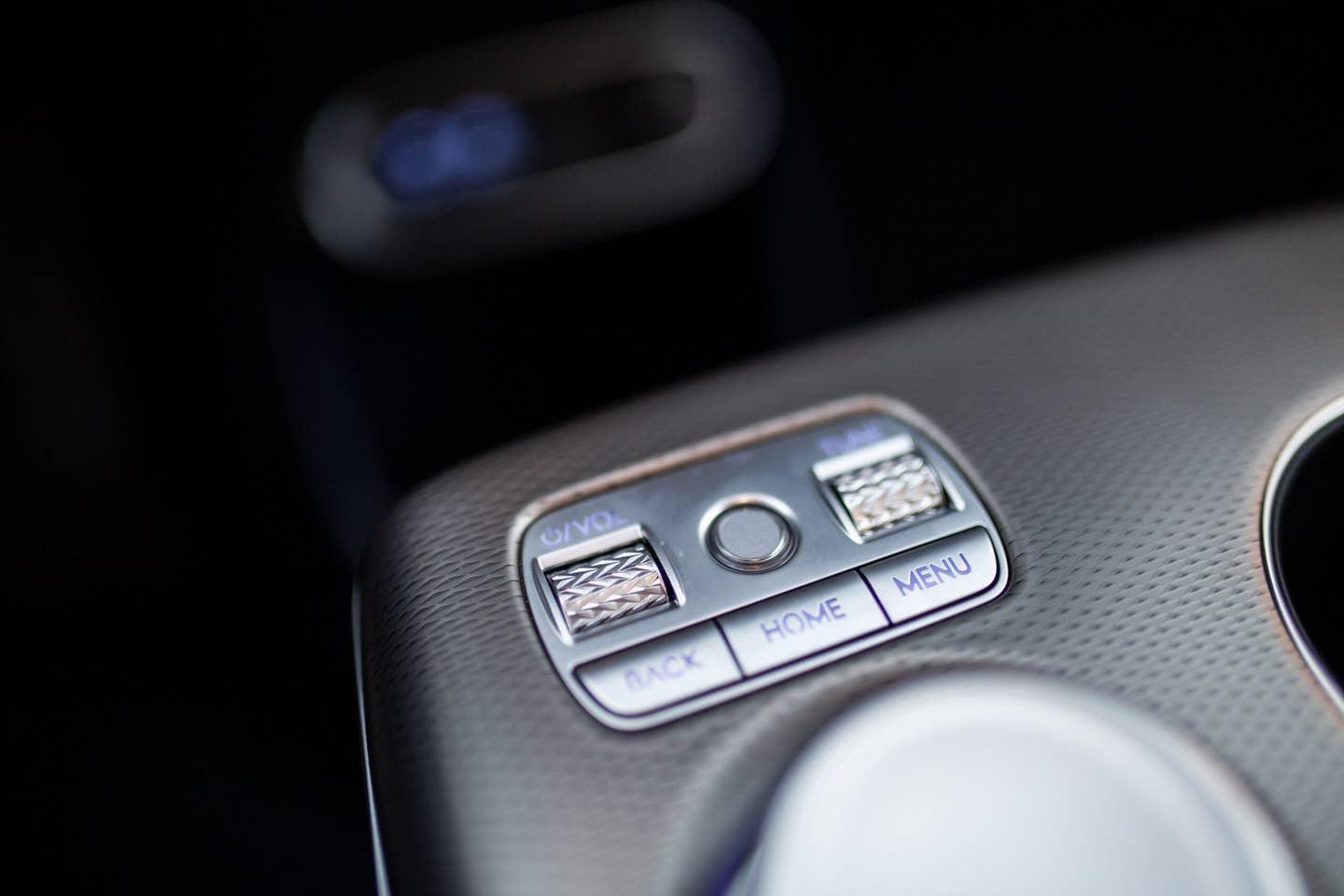
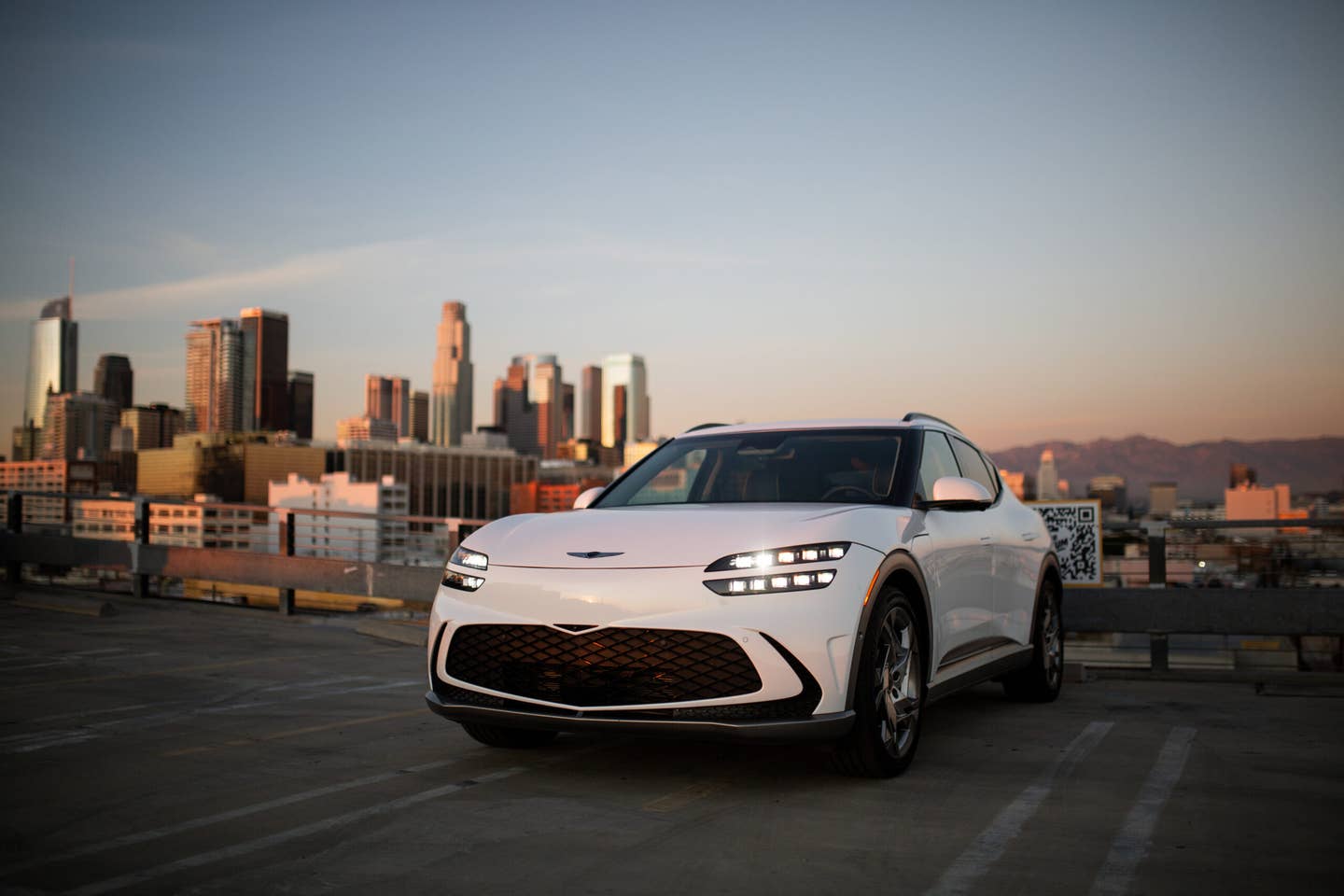
Chris Rosales
The throttle is beautifully calibrated with a progressive map that makes it easy to modulate thrust. That mapping becomes more touchy as the modes get sportier, offering more power earlier in the pedal travel. The brakes are the same story, with regenerative braking blending seamlessly into the normal brakes. There are four optional levels of regen, from coasting all the way down to one-pedal driving. Oh, and it has a shit-ton of torque. But EVs do that effortlessly.
Comfort-wise, the GV60 is slightly underdamped with particularly soft rebound damping in the rear, helping its excellent ride quality over all surfaces. Small impacts fade away in the glaze of the suspension, and large body motions are handled as if the occupants have a “fragile” label on them. It straddles a fine border on floaty, but it works extremely well. On rough city streets and highway driving, it was never fazed and was always comfortable. Paired with an impressively muted cabin, this thing eats miles. If it wasn’t for charging, I’d be doing road trips in it constantly.

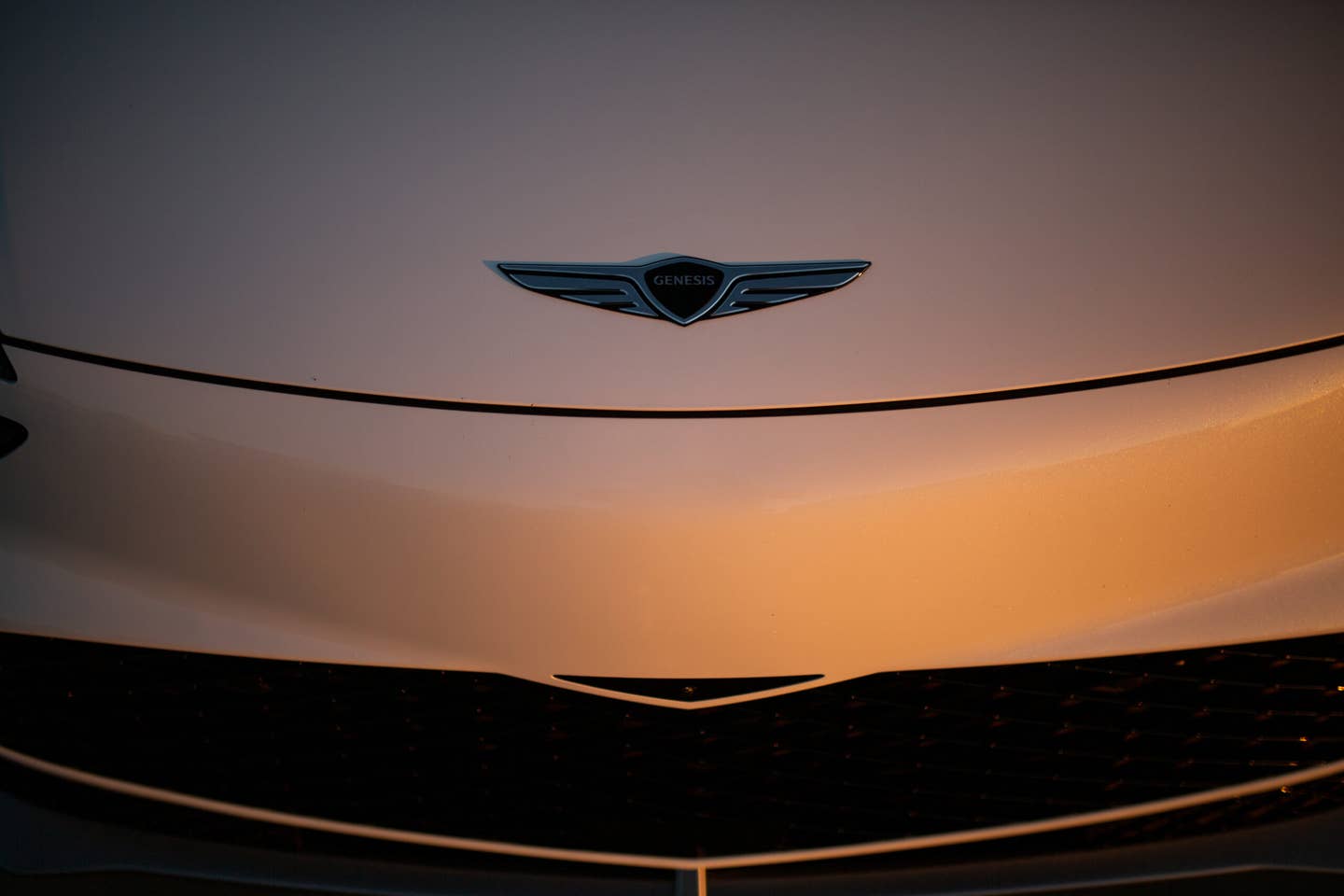
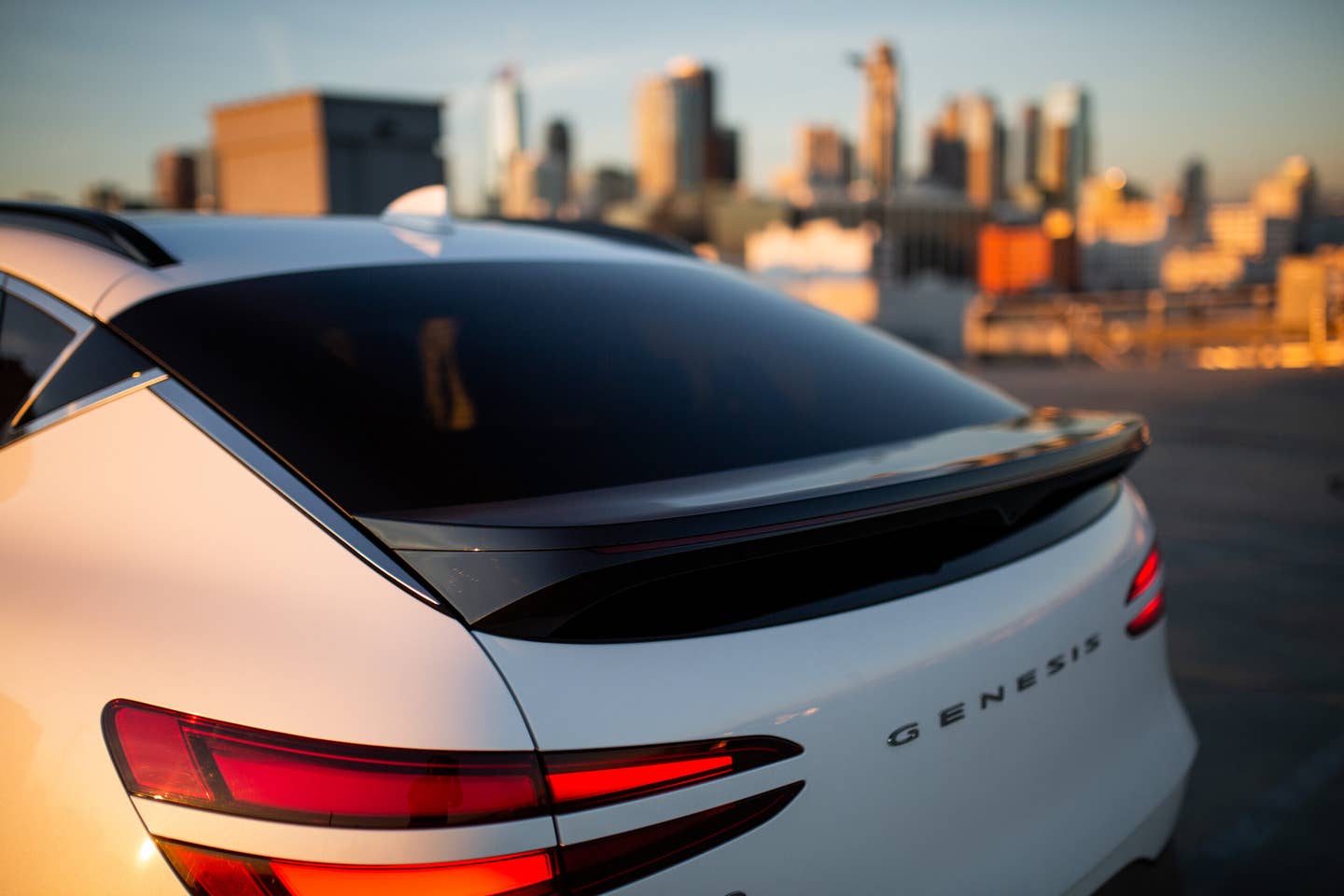
Chris Rosales
But, the handling suffers from this softness. Pardon the extreme nerdery: That soft rear rebound helps the car pose its weight nicely around corners with a slight rotation, but don’t try to find the limits. Physics reminds you of its nearly 5,000-pound curb weight very quickly, and on low-speed, snaking backroads, the underdamped suspension falls apart. It pitches and dives with power and deceleration, and heaves over on direction changes. Sweeping canyons are where it’s closer to home, but the GV60 is really meant for highway cruising.
The steering is unusually, almost anachronistically good. Fast ratio, but excellently weighted with weight right on the center, building up further off-center. In sport mode, it feels almost unassisted in corners, which is extremely cool when paired with the fast steering. In parking lots and slow maneuvers, the weight is still there but becomes much more assisted. Other modes become a lot more normal, but I enjoy that sport can get that heavy. All of that delicious weight and accuracy doesn’t translate into actual feel, but it’s enough to have fun on a sweeping road.
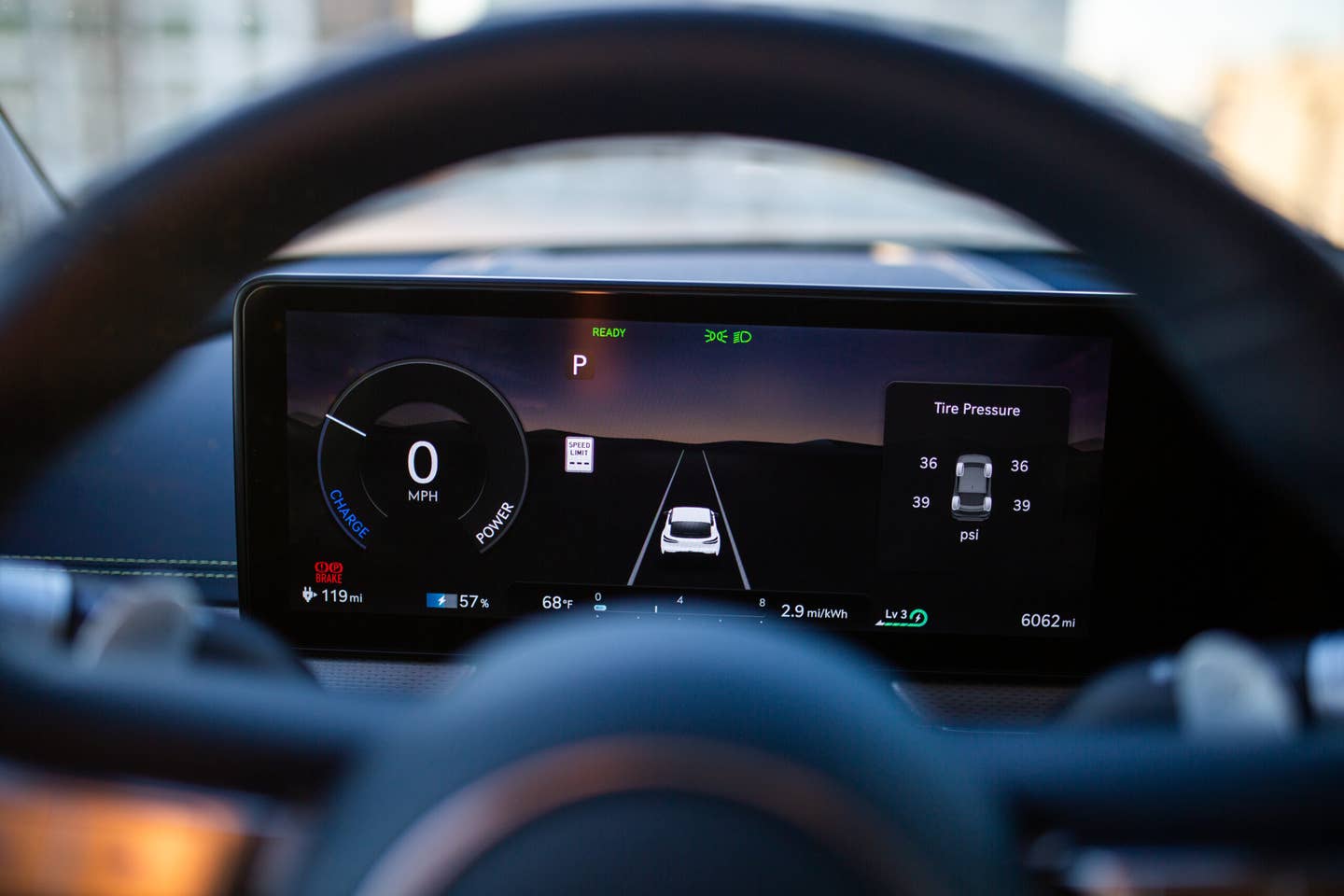
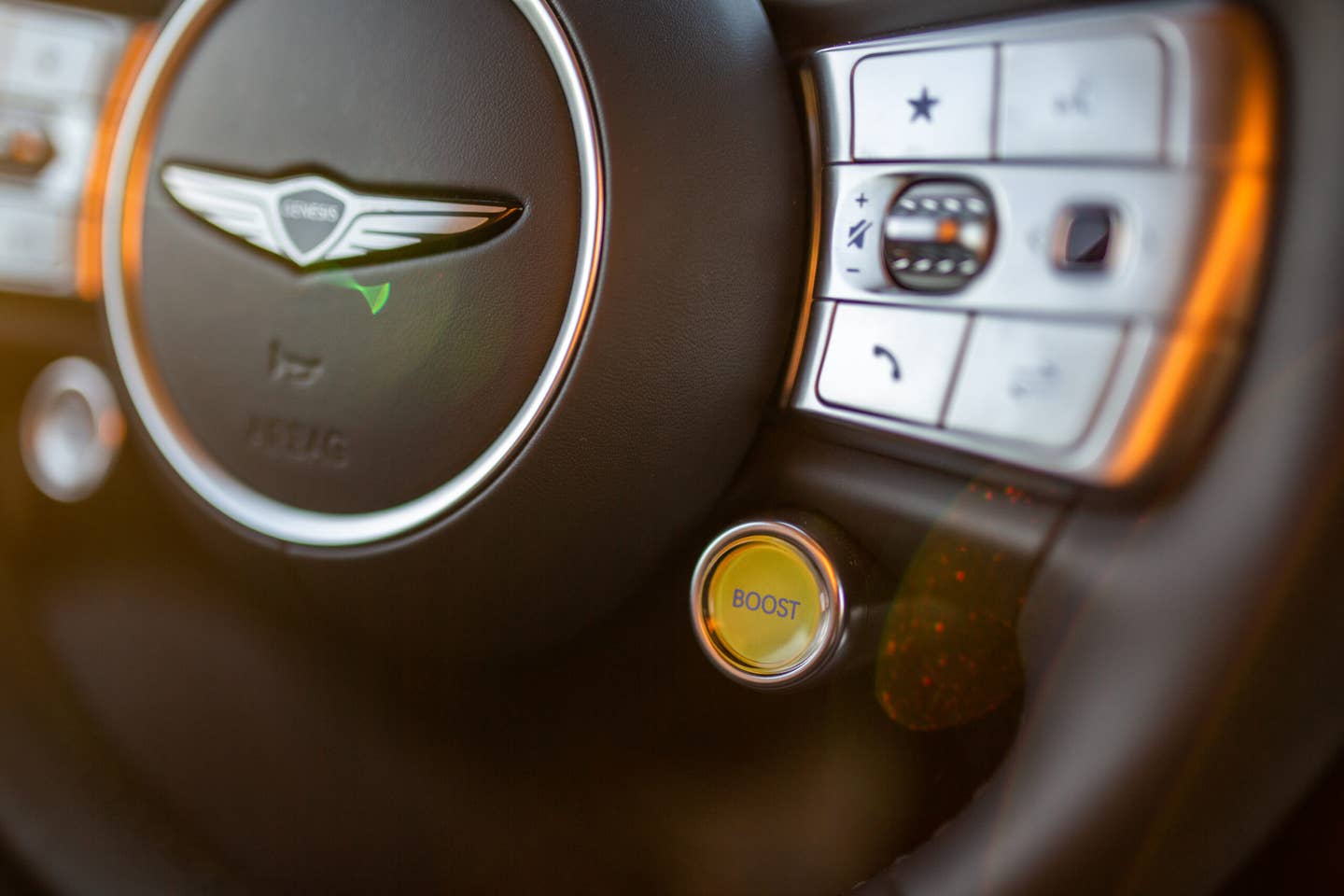

Chris Rosales
Finally, the driver’s assist systems and tech worked nicely while driving. Adaptive cruise didn’t get confused during my time with the car, and lane keep worked a bit better than average. The only strange feature is the GPS-based adaptive cruise control function that seemed to slow the car down whenever it felt like taking a break. Overall, the thing was relaxing, interesting, and a wonderful place to spend time, day or night.
The Highs and Lows
There’s no debate, the highlight of the GV60 is the interior. It’s just so full of panache, so maximal, and so retro-modern. It’s hard not to fall in love with it and its details, especially in the adventurous blue and yellow scheme. There’s color-changing ambient lighting that glows up from the doors, and the little LED in the side mirror adjuster changes color when switching positions. It’s what you pay for, over any other part of the car.
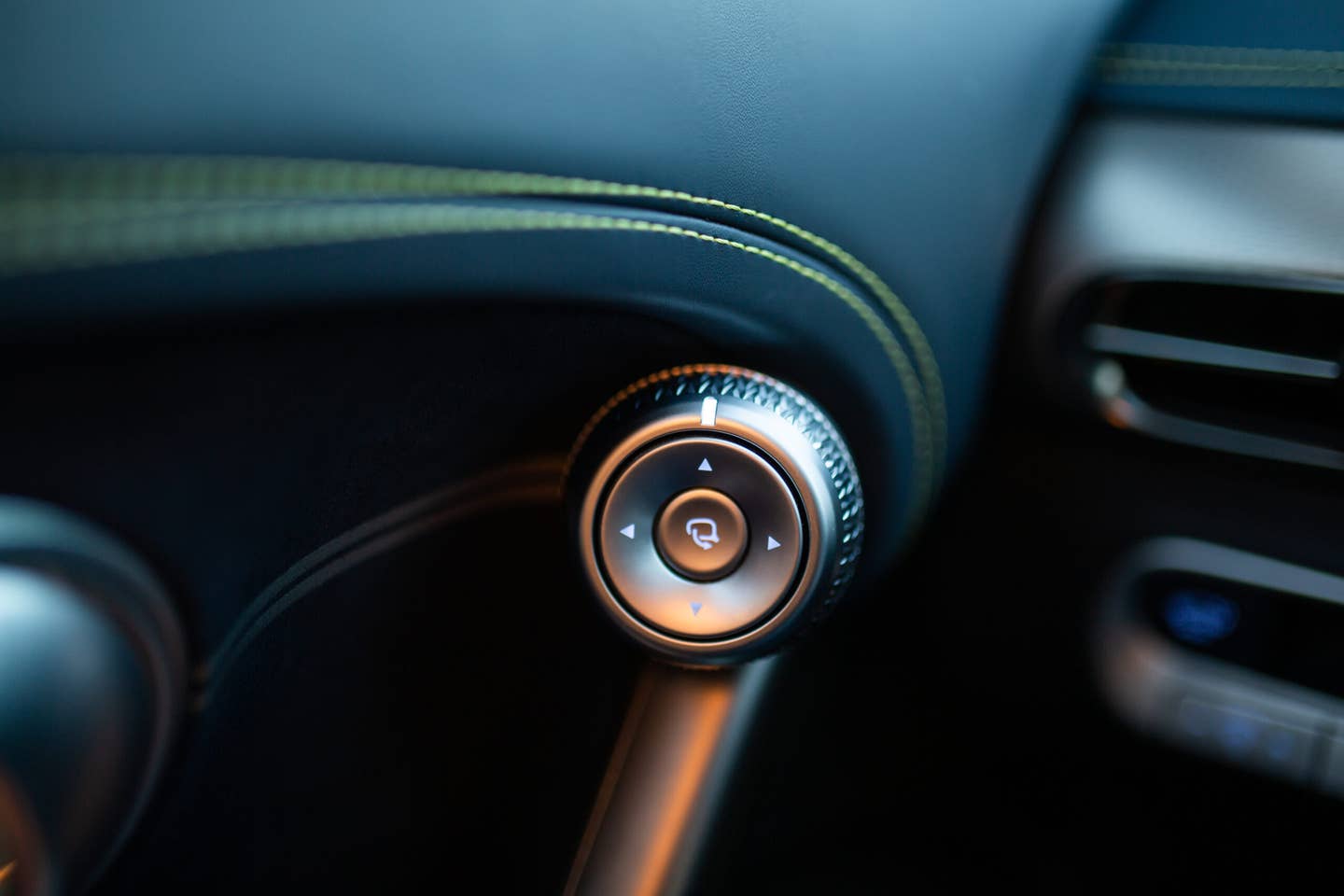
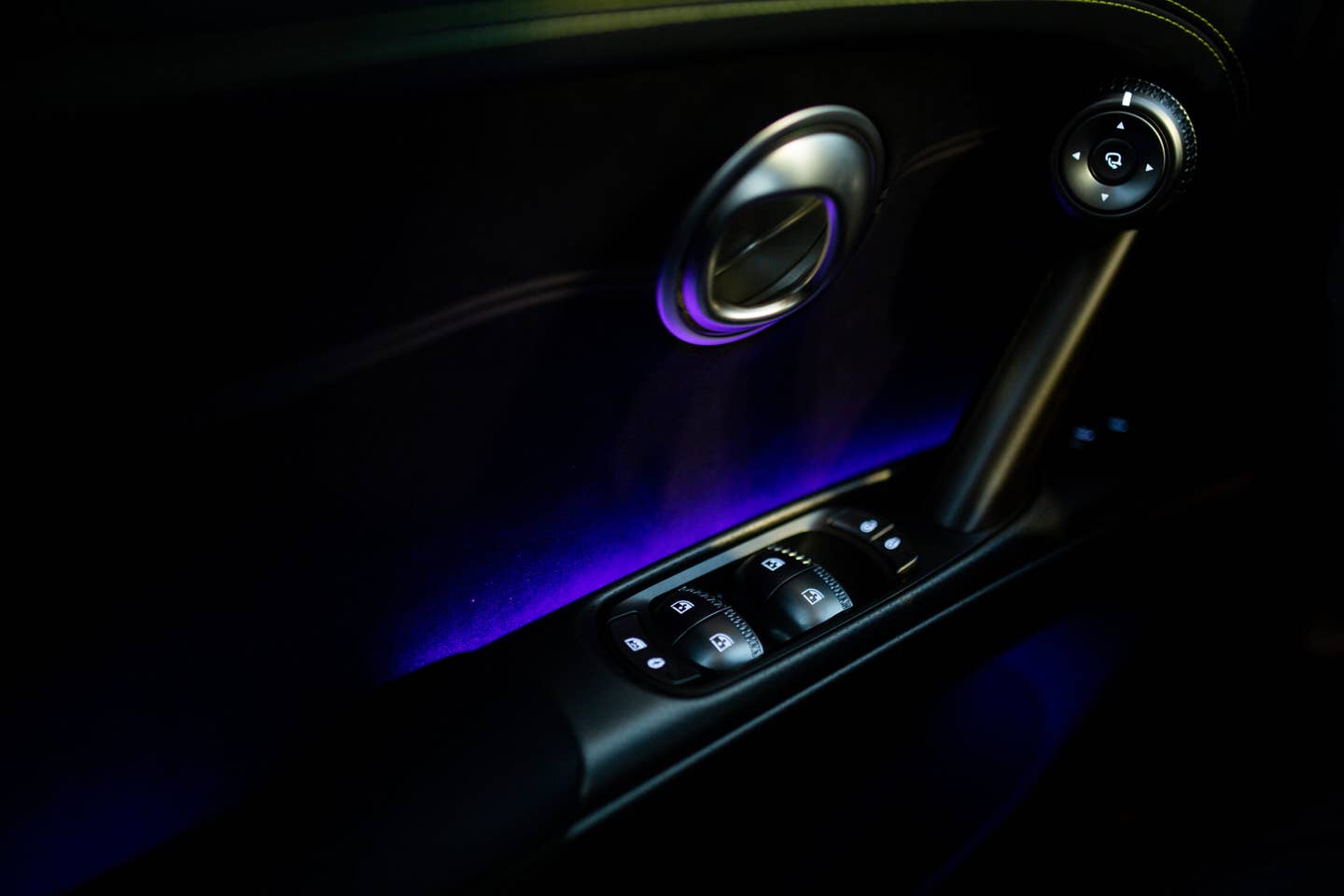
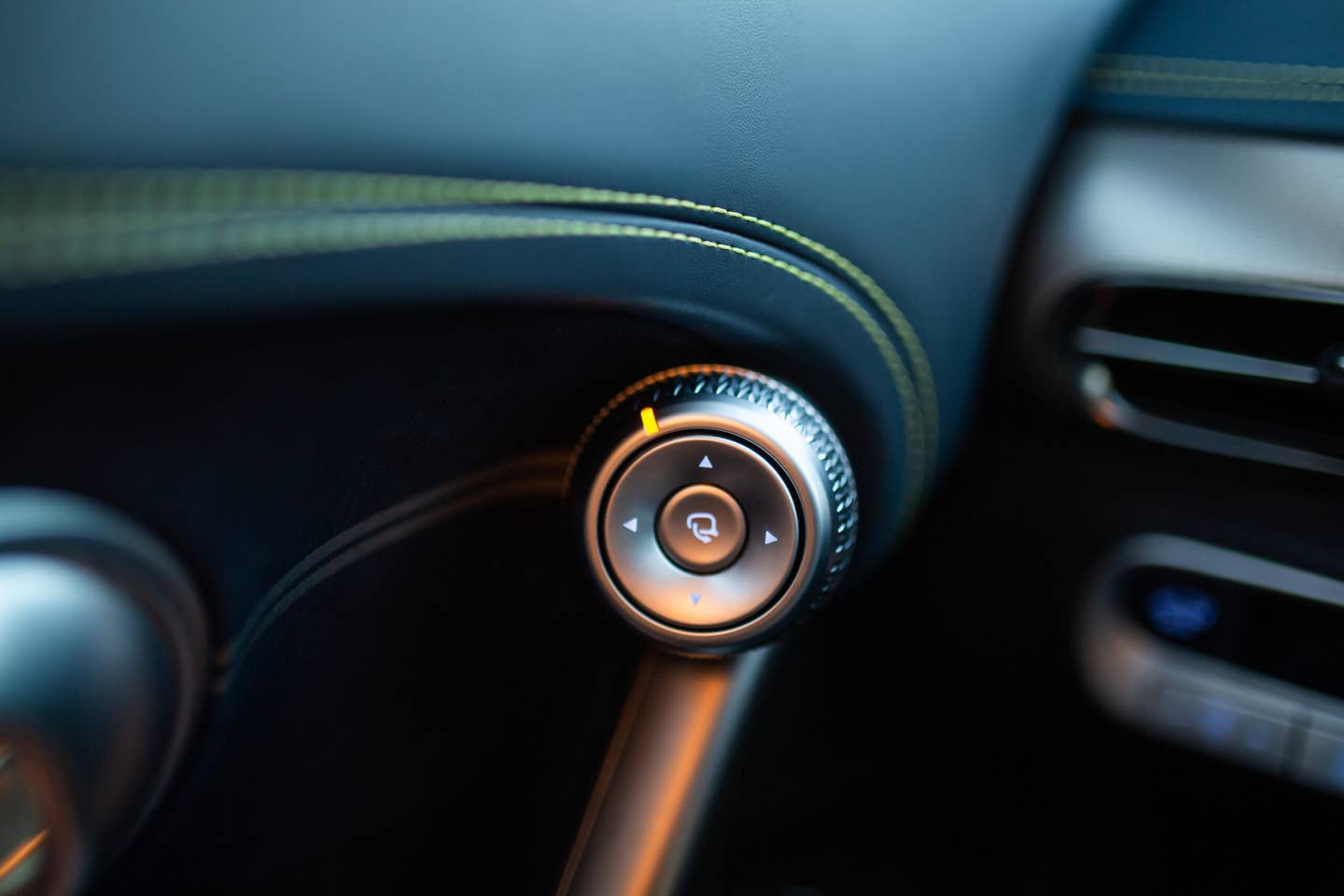
Chris Rosales
But the lowlight is a trickier subject, and highly use-case dependent. During my time with the car, I could only manage a real-world range of just under 200 miles, much less than the EPA-rated 235 miles. That comes with the caveats that I live at about 2,500 feet, drove the car to sea level a couple of times, and that it was a bit cold, around 40 to 50 degrees Fahrenheit. The highway drive downhill is decent, but going uphill used double the energy. The average didn’t work out well at about 2.2 miles per kWh on that hilly route, but highways aren’t an EV’s strong suit. For the entire week, I averaged 2.8 miles per kWh, so my particular use case might be extreme.
This is a general EV problem, and I really believe the 200 miles of max range is adequate for normal use, with some caveats. This will not be a great road-tripping EV without relying on charging stops, which are often unreliable. It supports 350-kW fast charging, but I found that the car wanted to settle into a 150-kW charge speed. This could be the temperature in my case, but a 150-kW charge is plenty quick, and stations are becoming more plentiful. Bottom line, you will be charging it up often. In the long term, going by the 20% to 70% battery fast charging longevity strategy, you’ll have less range than you think unless you charge at home. Unfortunately, it’s a tired talking point, but range is a slight issue for the GV60.
Genesis GV60 Performance Features, Options, and Competition
The $55,000 to $70,000 EV market is reasonably hot at the moment, with the Tesla Model Y, Polestar 2, higher trims of the Ford Mustang Mach-E, and Audi’s E-Tron being close competitors. The GV60 is an SUV, but some sedans in the segment like the Tesla Model 3 and BMW i4 M50 should also be in the conversation. It’s competitive in the segment in terms of tech, features, and overall luxury. It’s also right on the money in terms of range, if a little less than average.

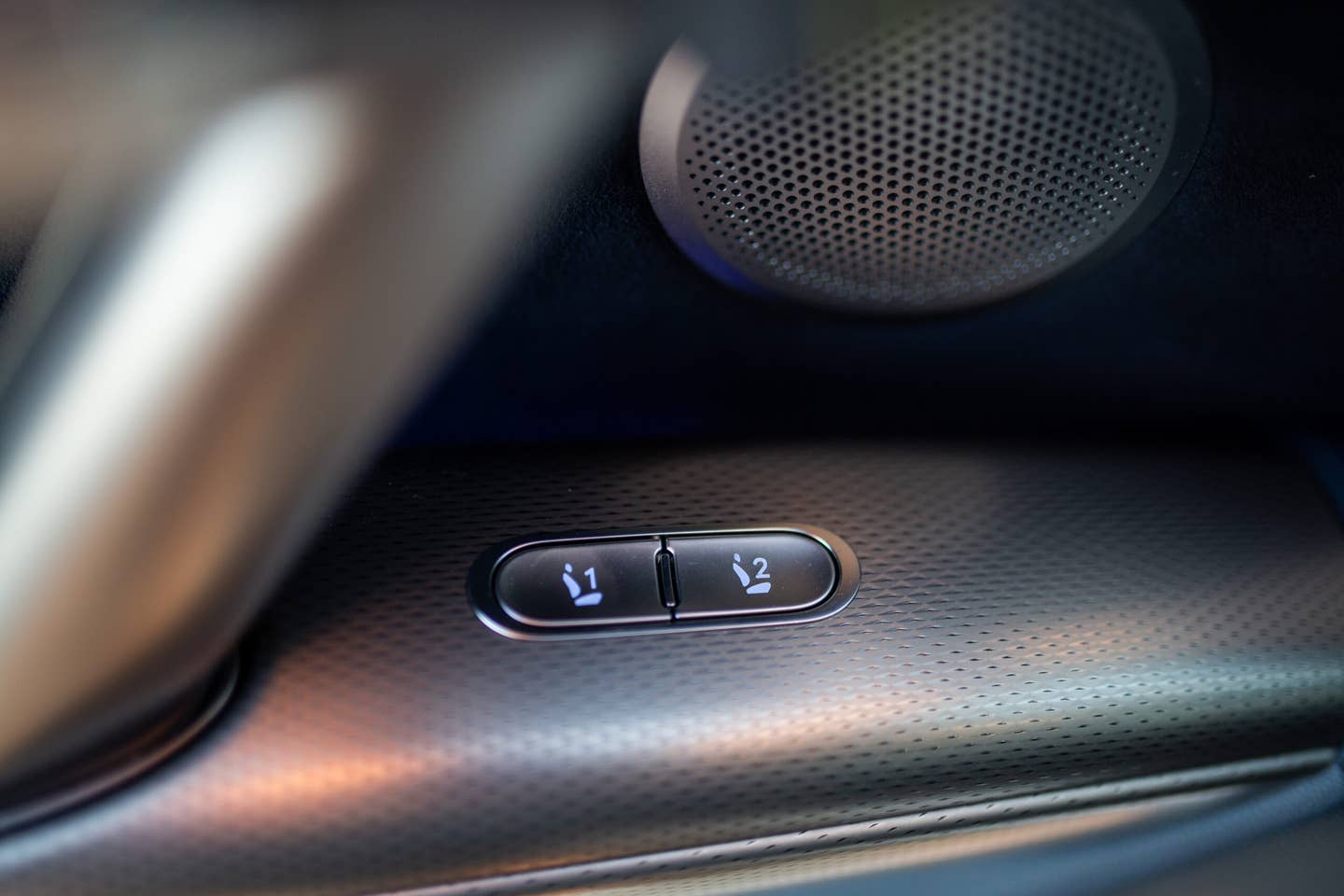


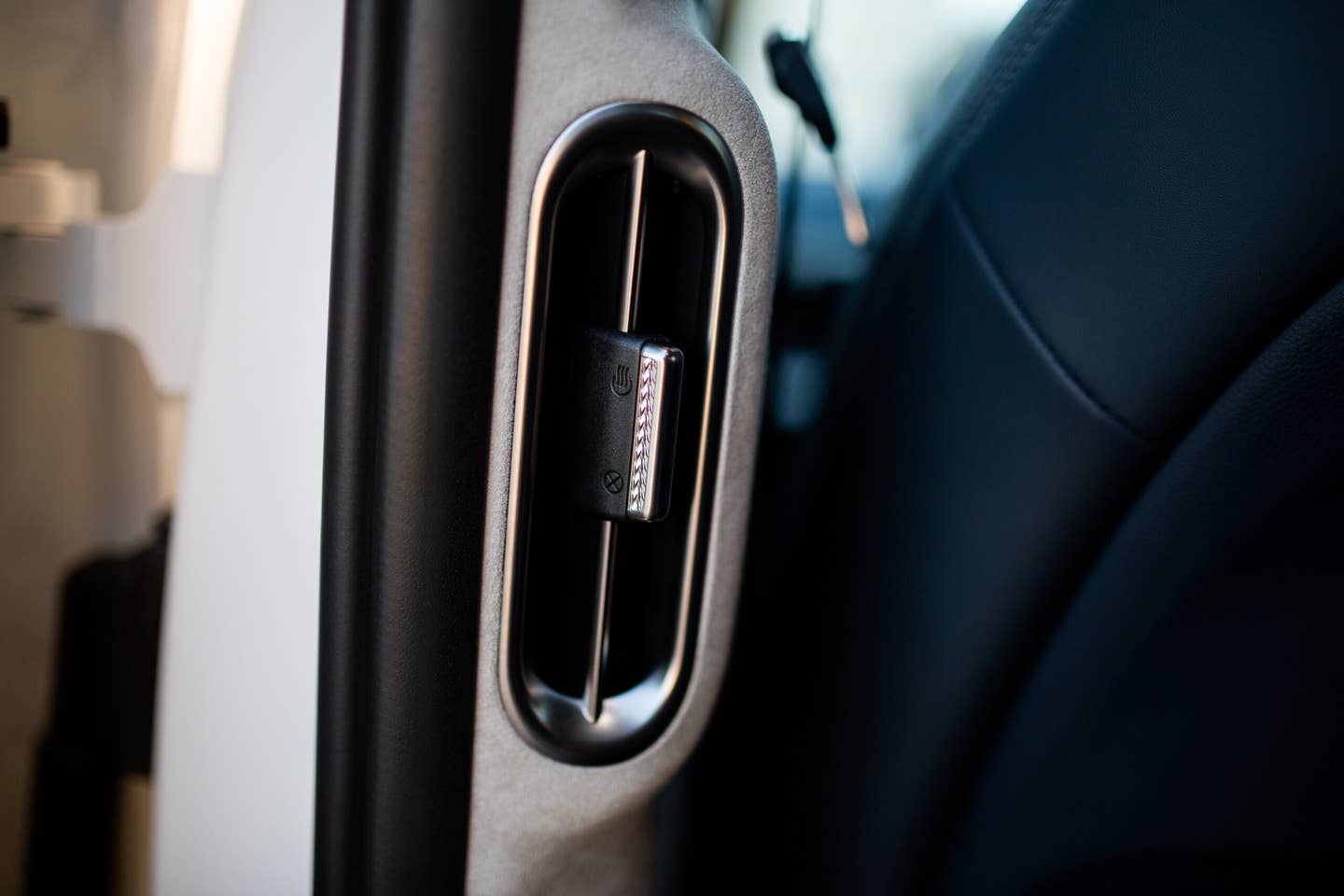
Chris Rosales
Options are sparse for the GV60. There are the two aforementioned trim levels and their differences in range and performance. All of the advanced driver assistance tech comes standard, as does the head-up display, the genuinely great Bang & Olufsen stereo, 360-degree parking cameras, and the 12.3-inch center display. There is so much standard equipment packed into the car that it would be insane to list them all, and there is no shortage of wow-factor tech. But if you do want to click some option boxes, Genesis offers certain paint colors for an extra $575.
Sustainability
Being an EV, one of the GV60’s biggest selling points is sustainability, regardless of how much it “costs” environmentally to build. It’s zero emissions on the road but it isn’t ultra-efficient with its battery pack. I averaged 2.8 miles per kWh in about 500 miles of mostly highway driving, with about 50 miles on twisties and 30 in the city. It’s not bad but fairly average.








